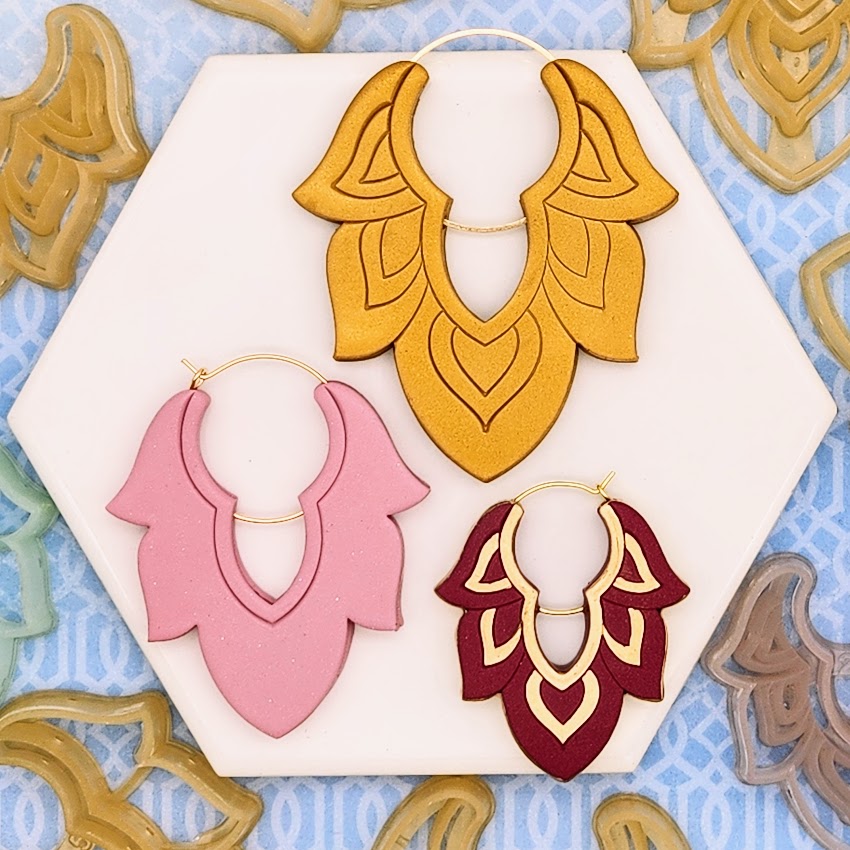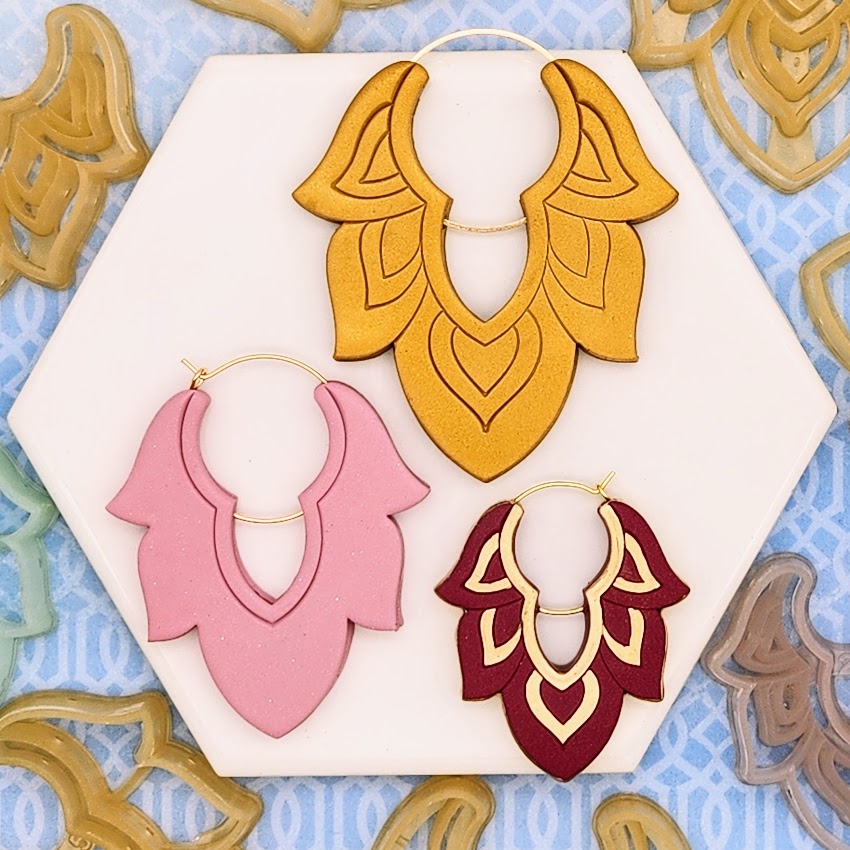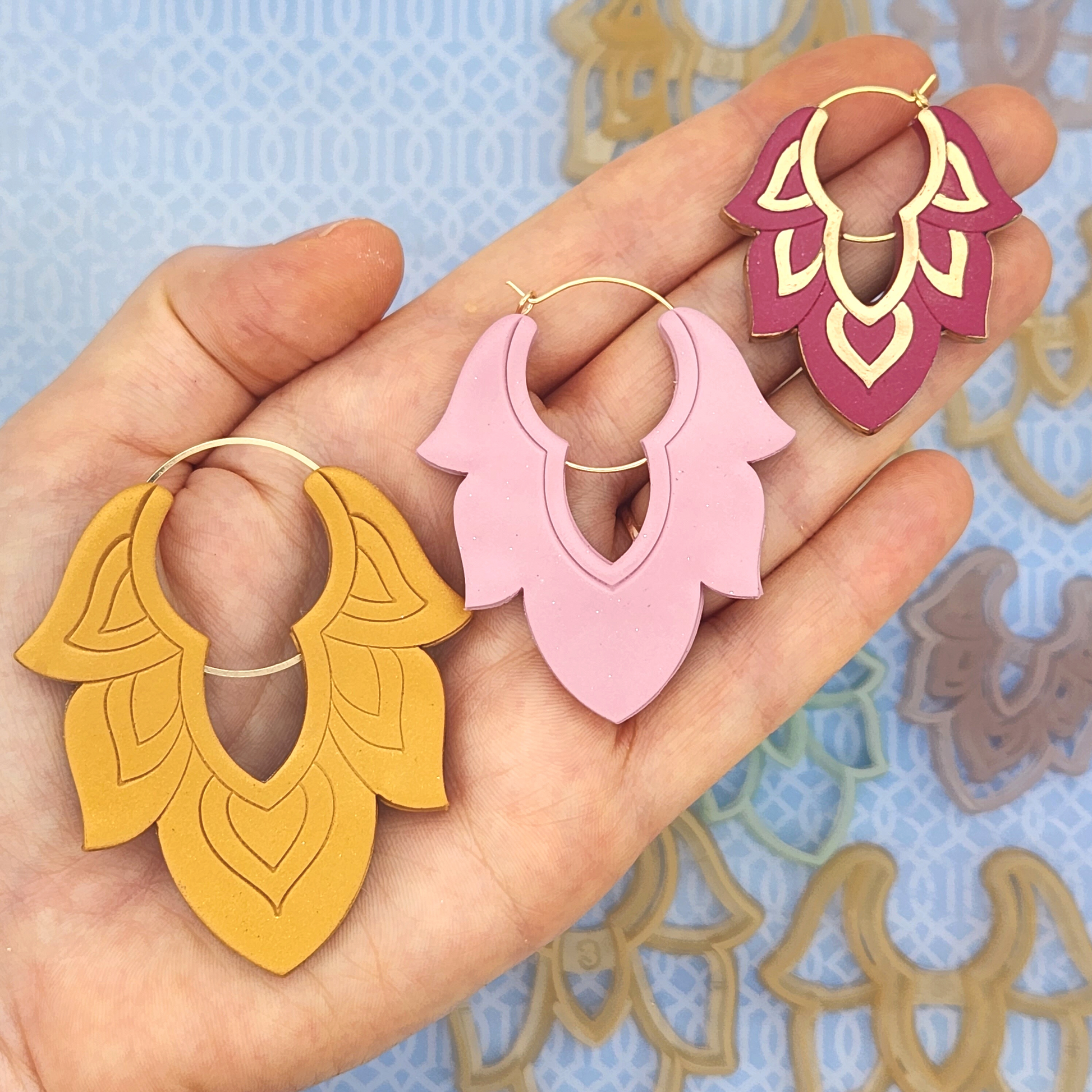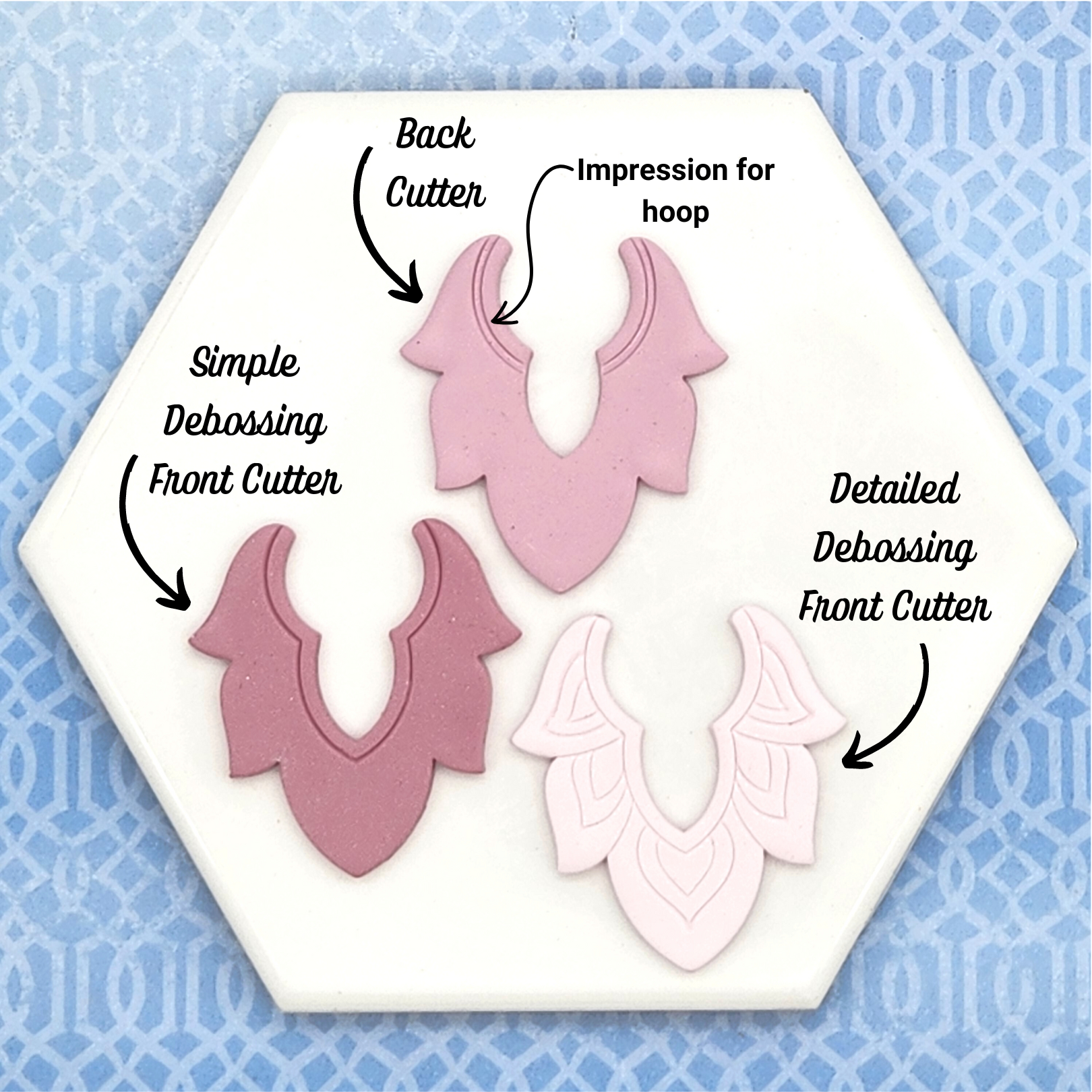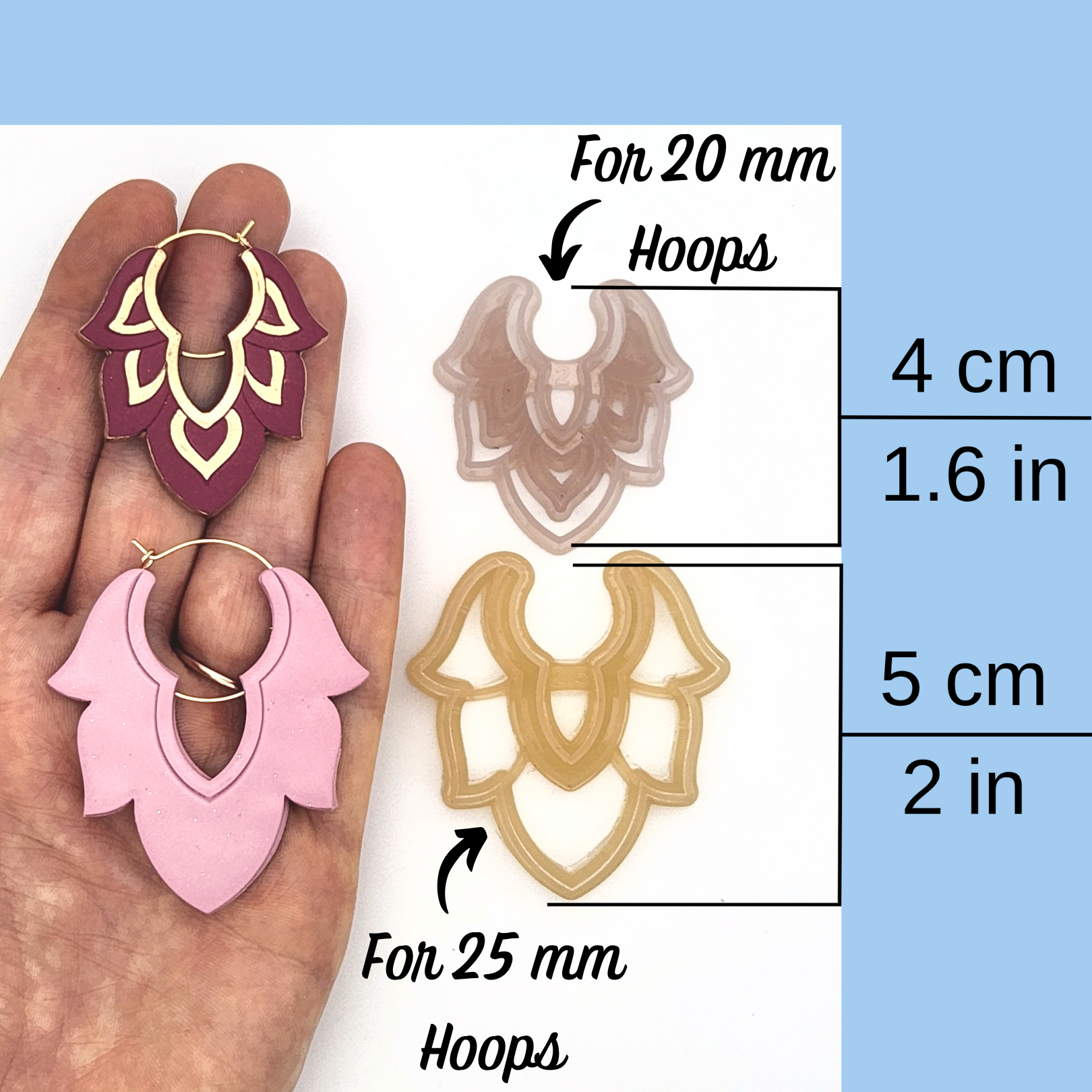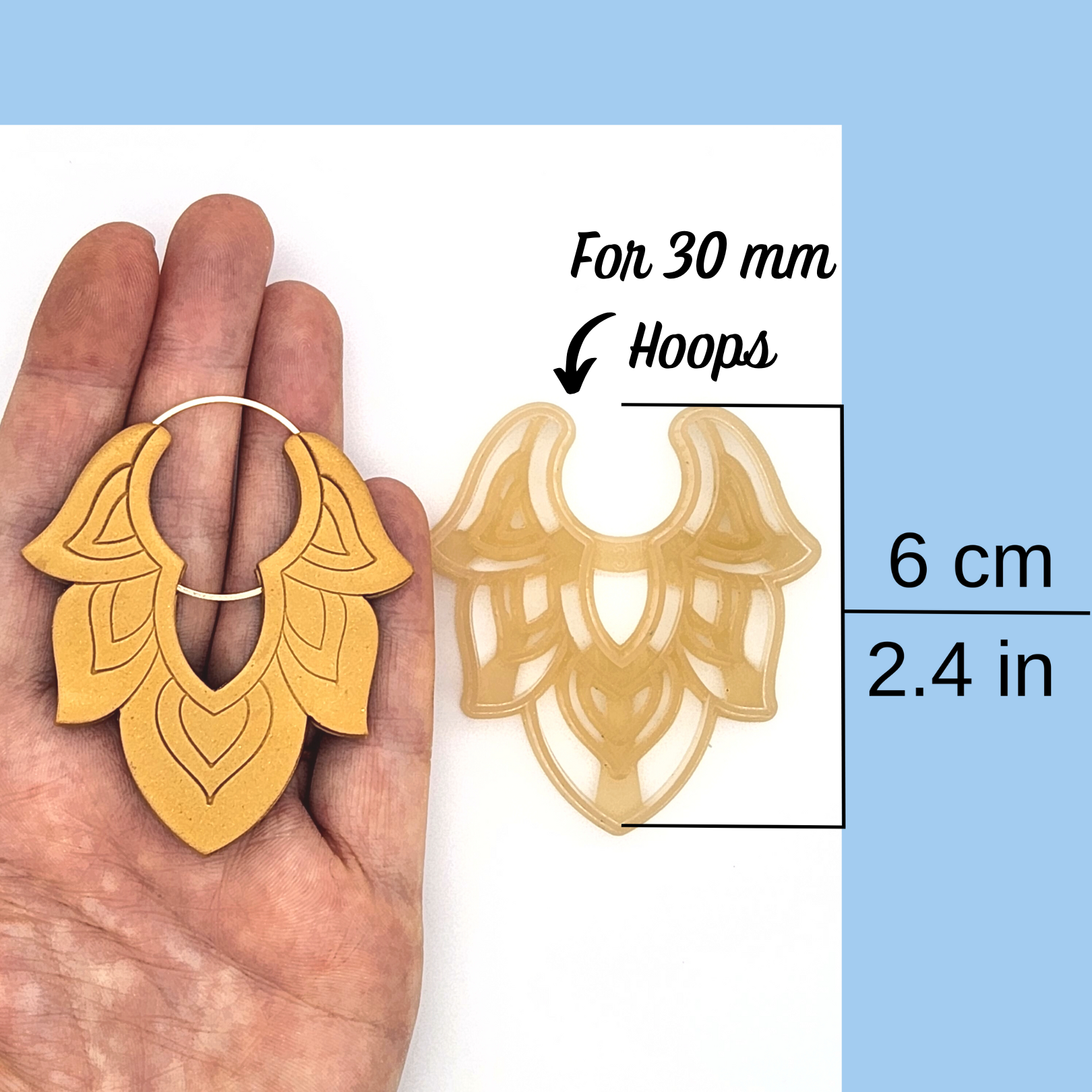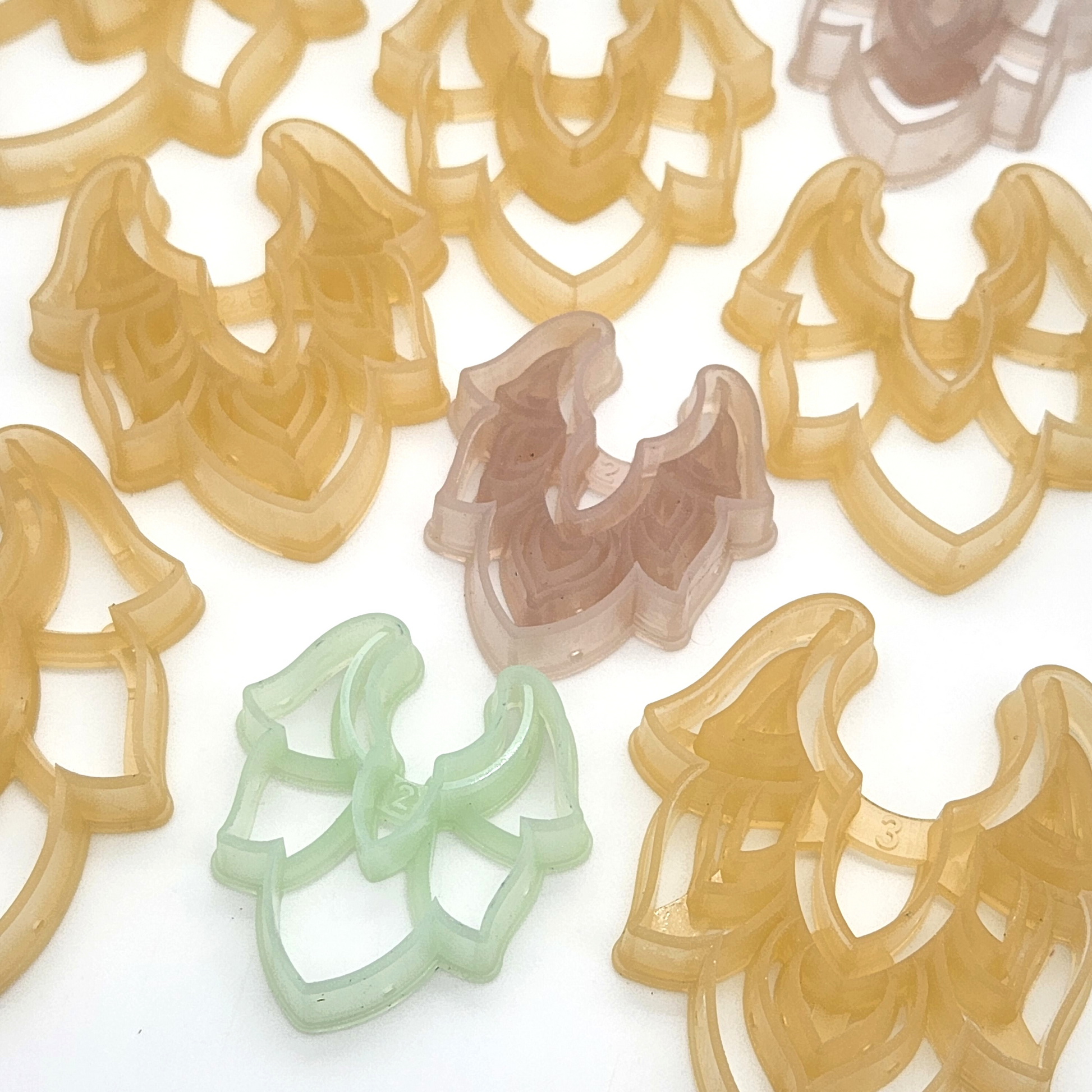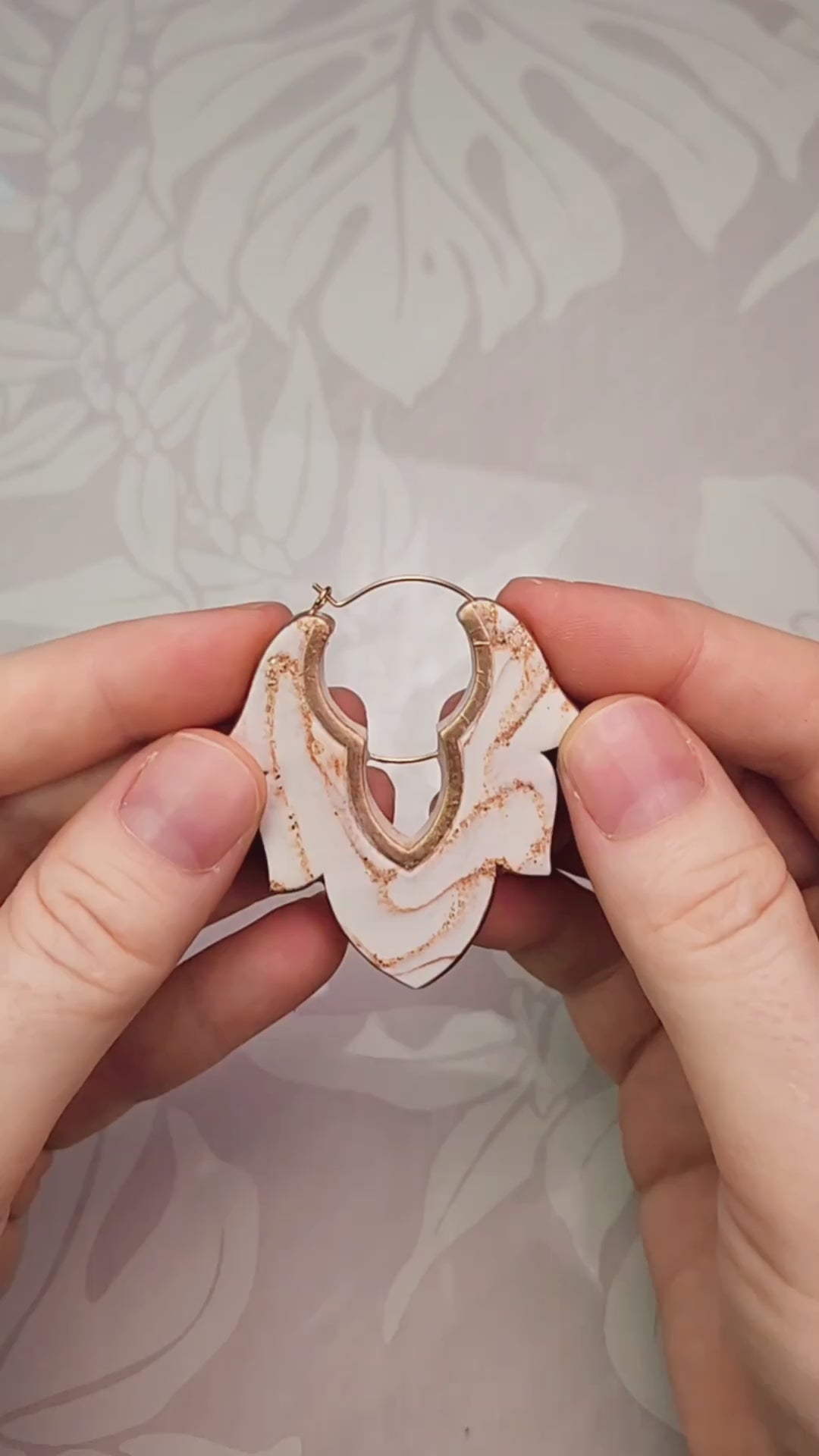Latifa - Hoop Embedding Cutter Set
Latifa - Hoop Embedding Cutter Set
Couldn't load pickup availability
This Moroccan polymer clay cutter can be used to embed hoop earring findings. The set includes two cutters, a debossed front cutter and a back cutter, which leaves an impression for the hoop. These cutters can be used with 20, 25, and 30 mm wine charm wire hoops, hinged hoops, endless hoops, and closed hoops. There are also two styles available for the front cutter, Simple Debossing and Detailed Debossing. Each style is available in three sizes: 4 cm (for 20 mm hoops), 5 cm (for 25 mm hoops), and 6 cm (for 30 mm hoops).
If you don't plan to use this shape to embed hoops, the Simple and Detailed Debossing fronts are also available as single cutters.
To embed hoops into these shapes:
- Cut out the back piece and lay your hoop in the impression left by the cutter.
- Add a little liquid clay or oven bake adhesive to the back piece.
- Cut out the front shape and place it over the back piece, leaving the hoop embedded between the layers. Try to arrange the layers so they line up and the edges are relatively smooth. The oven-bake adhesive or liquid clay in between the layers will help you slide the shapes around so they're easy to align.
- At this point, you can smooth the edges together, but this is likely going to be easier after baking.
- Bake.
- If the embedded hoop is the type that goes through an ear (as opposed to a solid hoop that you would attach a separate earring hook or post to), the edges of the shape will be facing forward when worn. You may want to smooth the edges and hide the seam. There are a few options for this:
- Add liquid clay or oven-bake adhesive to the edges and bake again. Make sure to add enough to fill any gaps so the edges will look nice and smooth. Colored liquid clay will completely hide the seam. Translucent liquid clay will cure almost clear, and you'll still be able to see the seam. If you use liquid clay, it may be best to bake the earrings while hanging so the liquid clay doesn't pool at the back of the earrings where they meet the baking surface. I personally used a mix of oven-bake adhesive and translucent liquid clay for a slightly thicker application. I then covered that with gold paint for an elegant, finished look.
- Smear softened solid clay over the edges and bake again.
- Add an extruded pipe of clay to the edges with some bakeable adhesive and bake again.
These debossing cutters are meant to be used with clay that is approximately 2.5 to 3 mm thick.
Our polymer clay cutters are printed with resin, meaning the individual lines from the printing process don't show at all so the edges of your clay pieces come out very smooth. Additionally, resin allows us to create a beveled cutting edge on the cutters so that they slice through the clay, pushing the excess clay out and away, rather than just smashing it down onto your cutting surface. You're left with crisp, clean edges often with little to no cleanup or sanding necessary.
Cutter color is not guaranteed. We're always playing around with new resin colors and shimmer effects. We can't promise yours will be this color, but we can promise that they'll be sharp and they'll look cute!
Cutter measurements are approximate, but they will always be within a millimeter or two of the posted measurements. Sizes are based on the height of the cutter, not the width.
Cutters are not guaranteed to be food safe.
All tools are made to order. Processing time is up to 7 days.
Shop all Moroccan | All Polymer Clay Cutters
View full details